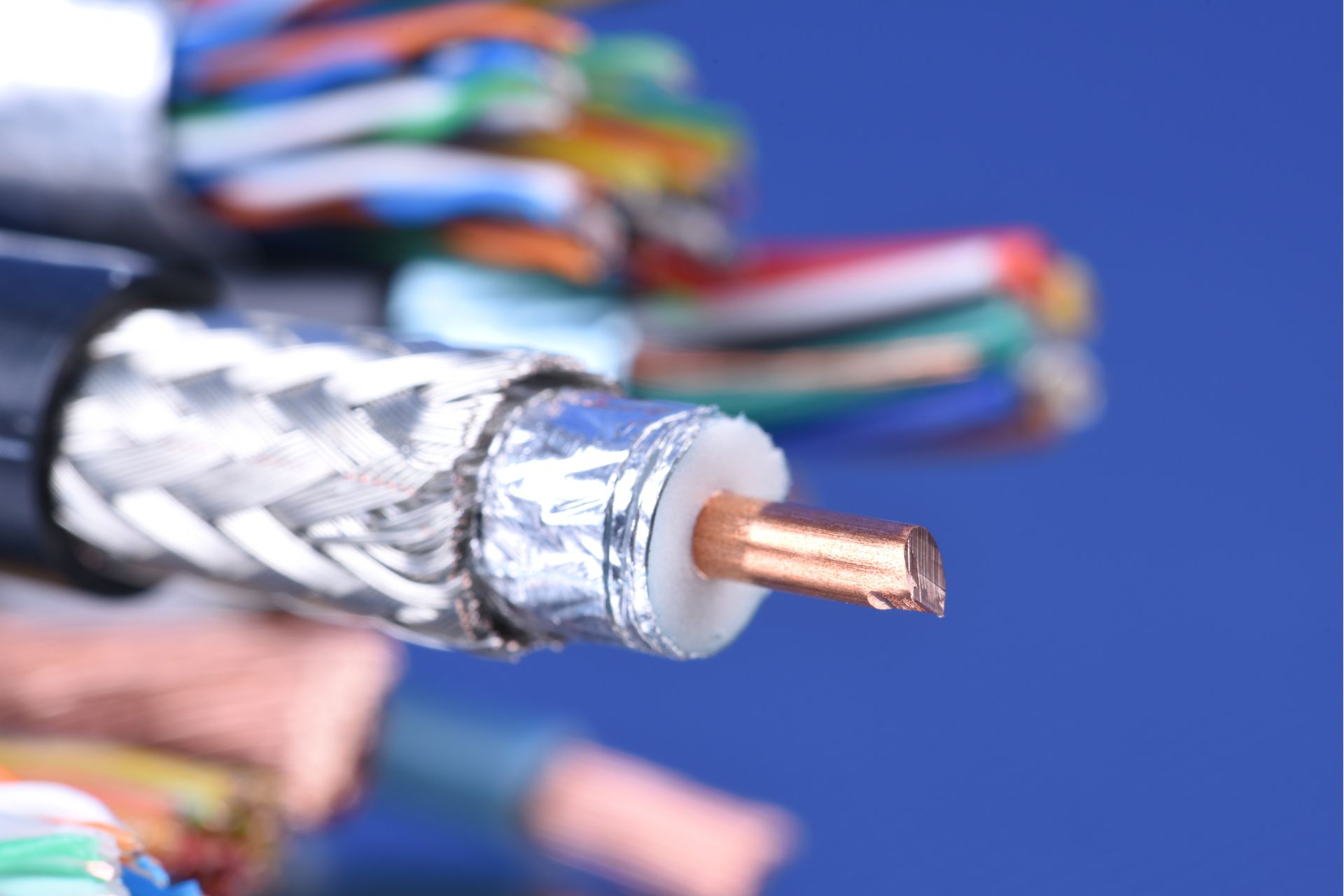Are you trying to run a coaxial cable in a wall? You have to drill a hole in the wall before pulling the line through. But how feasible is that advice? Can you even run coaxial cables through walls? This guide will tell you everything you need to know about the process.
Can You Run Coaxial Cable In Walls?
Yes, you can run coaxial cables in walls. The practice is as safe as they come. But you have to keep the following in mind:
1). Check The Regulations
You don’t lose anything by running a coaxial cable through a wall. However, local and even national regulations limit the types of installations people can perform.
Those regulations will also specify the procedures contractors must use. Therefore, before taking action, I want you to check the NEC.
What does it say about coaxial cables in walls? Are you allowed to run coaxial cables through walls? Do your local regulations specify the type of person that can perform the installations?
If they prohibit this practice, you should find a way of installing the lines without going through a wall. If the regulations expect homeowners to hire experts to perform these installations, find a licensed contractor to execute this task.
2). Determine The Route
You can’t just punch holes through random sections of the wall. You have to find the most efficient route to your destination.
Where are you taking the coaxial cable? The destination will influence the difficulty of the task. For instance, are you running the wires to the living room or basement?
Some locations may compel you to pull the wires through several walls, floors, and ceilings. It takes a lot of diligence to identify an efficient route that reduces the number of walls, floors, and ceilings you have to puncture.
3). Check For Hazards
Have you accounted for the potentially hazardous conditions in the walls? You can’t just drill haphazardly. What if you break an electrical line? What other lines did you bury in the walls?
Can the coaxial cable run safely beside those lines? These questions are not that difficult to answer if you played a substantial role in the construction of the house.
But if you just moved in, talk to a contractor. Better yet, get the blueprints and find out what they have to say about the pipes and conductors in the walls, ceiling, and floors.
4). Don’t Underestimate The Cost
Take a moment to consider the cost of this project. As you now know, some coaxial cables have to traverse floors, ceilings, and walls to reach your destination.
Many homeowners underestimate the cost of installing coaxial cables because they don’t realize how many walls, ceilings, and floors they must break open to pull the wires through.
Naturally, you have to fix all the damage you do. More importantly, you cannot perform challenging projects of this sort unless you have the relevant skills and experience.
Houses are more delicate than you realize. You may compromise a wall by punching a hole in the wrong place or adding too many openings. This concern sounds absurd to people who rely on drills to perform projects of this sort.
But some homeowners are so ignorant they won’t hesitate to take a hammer to their walls. They are better off hiring experts because they don’t know any better.
5). Try Bundling All The Wires
You don’t have to run coaxial cables individually through the wall, especially if you have other lines that require installation as well. Try bundling all the wires. This makes the installation process more convenient.
Interference is a concern, but only a mild one. You don’t have to worry if your cables are properly insulated.
6). Inspect The Cables
Don’t walk away until you’ve inspected the cables. You can easily damage these cables during the installation process. Therefore, you should take a moment to look for breaks and tears along the jacket.
You should also test the application. Make sure the device in question is working as expected. Don’t be afraid to hire a technician at this stage. Ask them to look at your work. They may observe mistakes you missed.
How Do You Feed Coaxial Cable Through Walls?
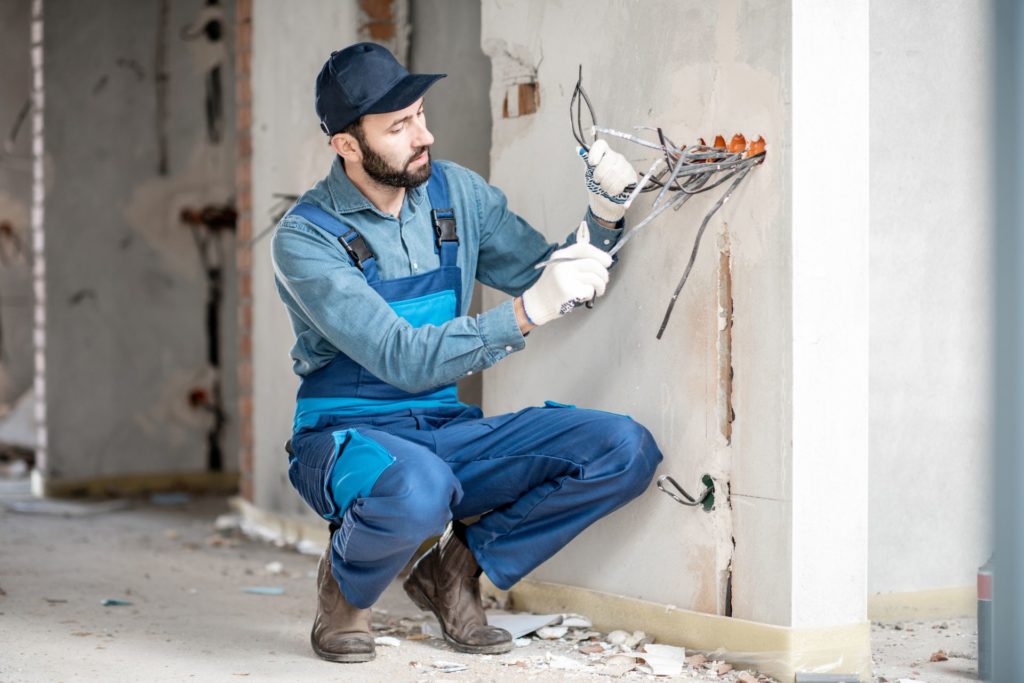
It doesn’t take much effort to run wires through walls at a construction site such as an unfinished basement. People do this all the time during remodeling projects. But what about a finished wall?
This is more challenging, but it can be done. Just follow these steps:
1). Make a plan. Identify the route your wires will follow. You can ask a contractor to draw a plan for you to follow. They will help you avoid places with electrical conductors.
2). Measure the distance you have to cover to reach the application. You have to ensure that the coaxial cable is long enough to cross that distance. Naturally, you have to perform these measurements before you buy the coaxial cable.
3). Make a hole in the wall. The size of the hole will depend on the application. For instance, the spruce has shown consumers how to cut a hole in an electrical box.
They want you to place the hole between the wall studs, which you can locate with a stud finder. Draw an outline of the outlet you want to install. This allows you to ensure that the new outlet matches the height of the other receptacles in the room.
Technically speaking, these instructions don’t apply to you because coaxial cables have nothing to do with electrical outlets. But the concept is the same. Make a hole where the line will enter.
Add a second hole at the destination where the cable will emerge before running to the application in question.
4). The hardest part is running the coaxial cable from one hole to the other. The best solution is fish tape. You attach one end of the fish tape to the line before pushing the other end into the hole.
You can use a wire hanger to retrieve it. If you have an assistant, they can also look for the fish tape at the exit hole. Once you retrieve the fish tape from the exit hole, you are basically done.
At that point, it is a simple matter of pulling the fish tape until the cable emerges. Proceed gently. Otherwise, you risk damaging the line.
Find the shortest route to your destination. You don’t want the signal loss to become a problem.
If you want to know more in detail, I found this video to be helpful.
How Much Does It Cost To Run Coax Through A Wall?
Your expenses are unlikely to exceed $500. Although, the budget may skyrocket because of the distance you have to cover and the amount of wall, floor, and ceiling repairs you have to perform.
Read Can I Connect Ethernet To Wall?
Things To Consider While Running Coax Through Wall
Coaxial cable installation requires careful planning, especially if you intend to pull the wires through a wall. These are just a few of the things you should consider beforehand:
1). Coax Length Matters
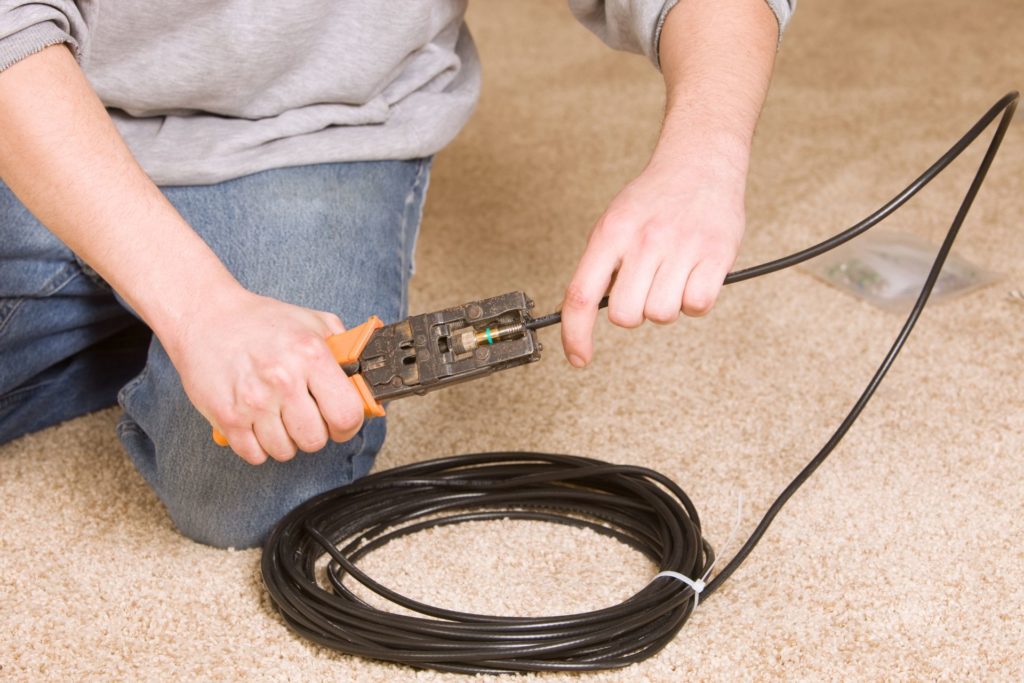
Yes, the cable length matters. Think about it. The coax has to run from one point, through a wall or ceiling, to the application at your destination. But the cable cannot do that if the length is lacking.
This is why professional contractors start by measuring the distance a cable will cover. They have to buy a line whose length exceeds that distance. Otherwise, it won’t reach.
Don’t forget: you cannot run the cable in a straight line from its origin to the destination. A straight path is ideal because it is the shortest route. But if you want to run the coax through walls, it will take a much longer path as it meanders from room to room.
Some people do not mind the extra distance because it keeps the coax concealed. However, you must compensate for the extended journey by getting a longer cable.
2). Consider The Life Expectancy of Coaxial Cable
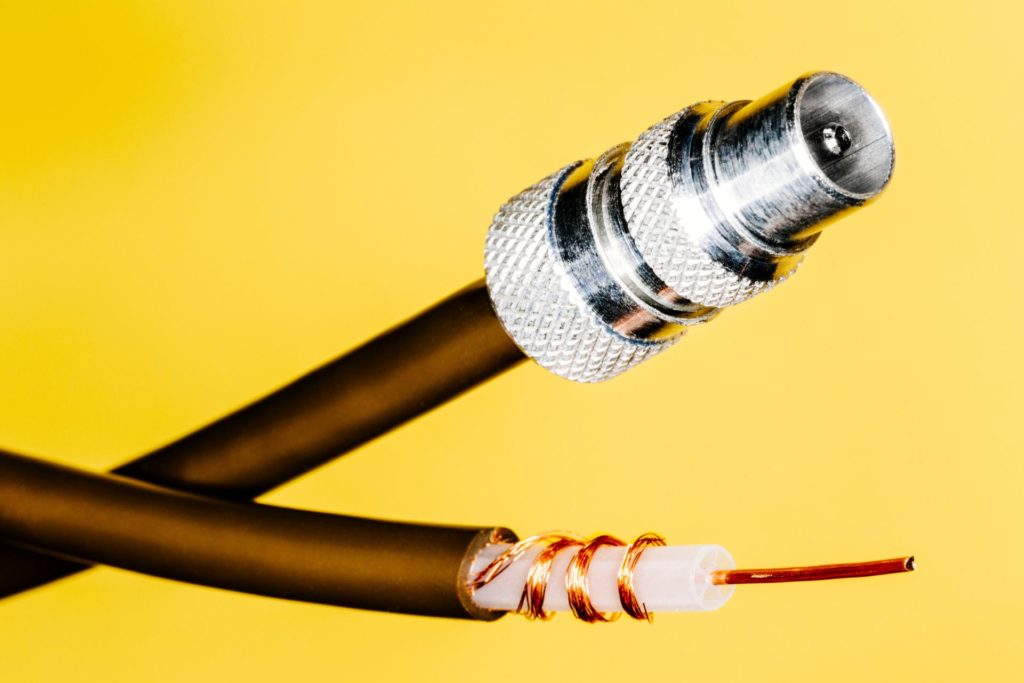
Coaxial cables have a limited lifespan. The lifespan will depend on the type of cable and insulation. These lines are also susceptible to environmental factors like direct sunlight and moisture.
Your devices will warn you if your cable needs replacement. For instance, your internet connection will become unreliable.
Fortunately, you can take certain steps to extend a cable’s lifespan, including:
- Use self-amalgamating tape to fight moisture.
- Buy high-quality coaxial cables with high molecular weight polyethylene that resists the effects of sunlight.
- Deploy cables with more robust insulation in environments with dangerous components, such as corrosive vapors.
3). Gently Install Coax Cable
You can damage the coaxial cables during installation. Don’t pull cables too hard. Homeowners can’t help it. If you have spent hours trying to fish a coax cable out of a hole, you may pull harder than usual once you retrieve it.
But doing so will compress the foam, causing the signal quality to deteriorate. Use a gentler approach.
4). Keep 6 Inch Gap Between Electrical & Coaxial Cable
Electrical wires can interfere with coax signals. Keep a 6-inch gap between the electrical and coaxial cables. Don’t expect conventional barriers like concrete and wood to prevent this interference.
The bigger the distance between the coax and electrical cables, the stronger the signal. Use a stud finder to identify the pipes and wires in the walls before you start drilling.
5). The Cable Type Matters
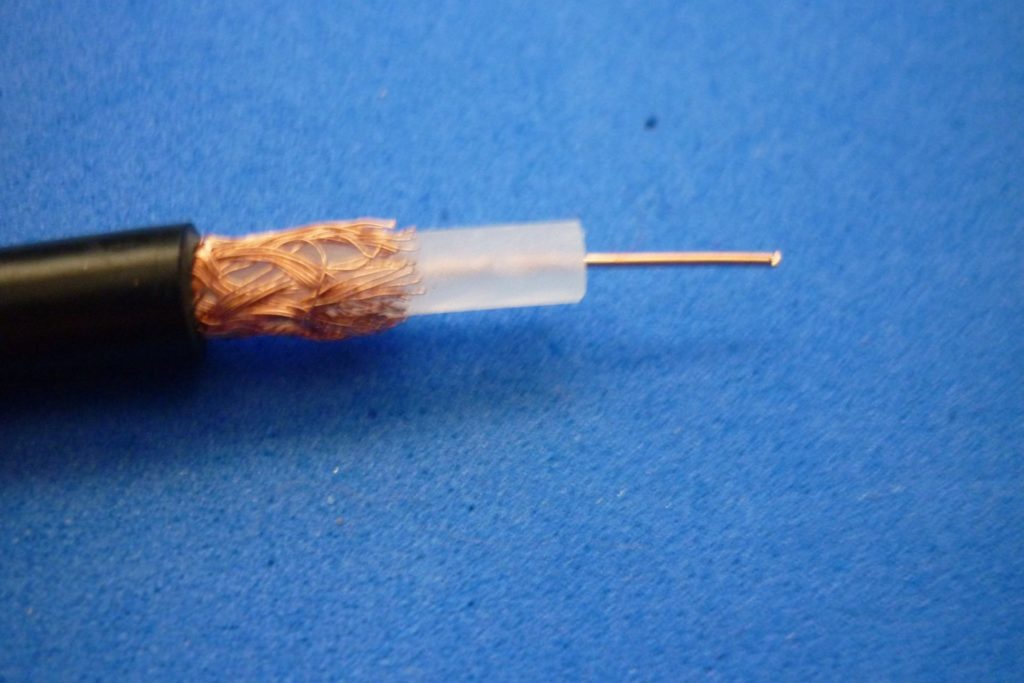
The type of cable matters. You can run a conventional coaxial cable for your TV through a wall. But you cannot do the same for power cables. Power cables are different from electrical wires like Romex.
Running power cables through the wall breaks NEC rules. An inspector may fine you if they see what you’ve done. But even if you can hide this mistake from the inspector, what if it starts a fire?
Don’t expect your insurer to cover these damages. Once they identify the source of the fire, they will remind you of the NEC clauses warning against the practice before ultimately denying your claim.
You can avoid unnecessary repair costs by hiring a professional. They know the suitable types of wires to bury in a wall. They can also check the local regulations to determine whether or not they permit the installation of coaxial cables in walls.

